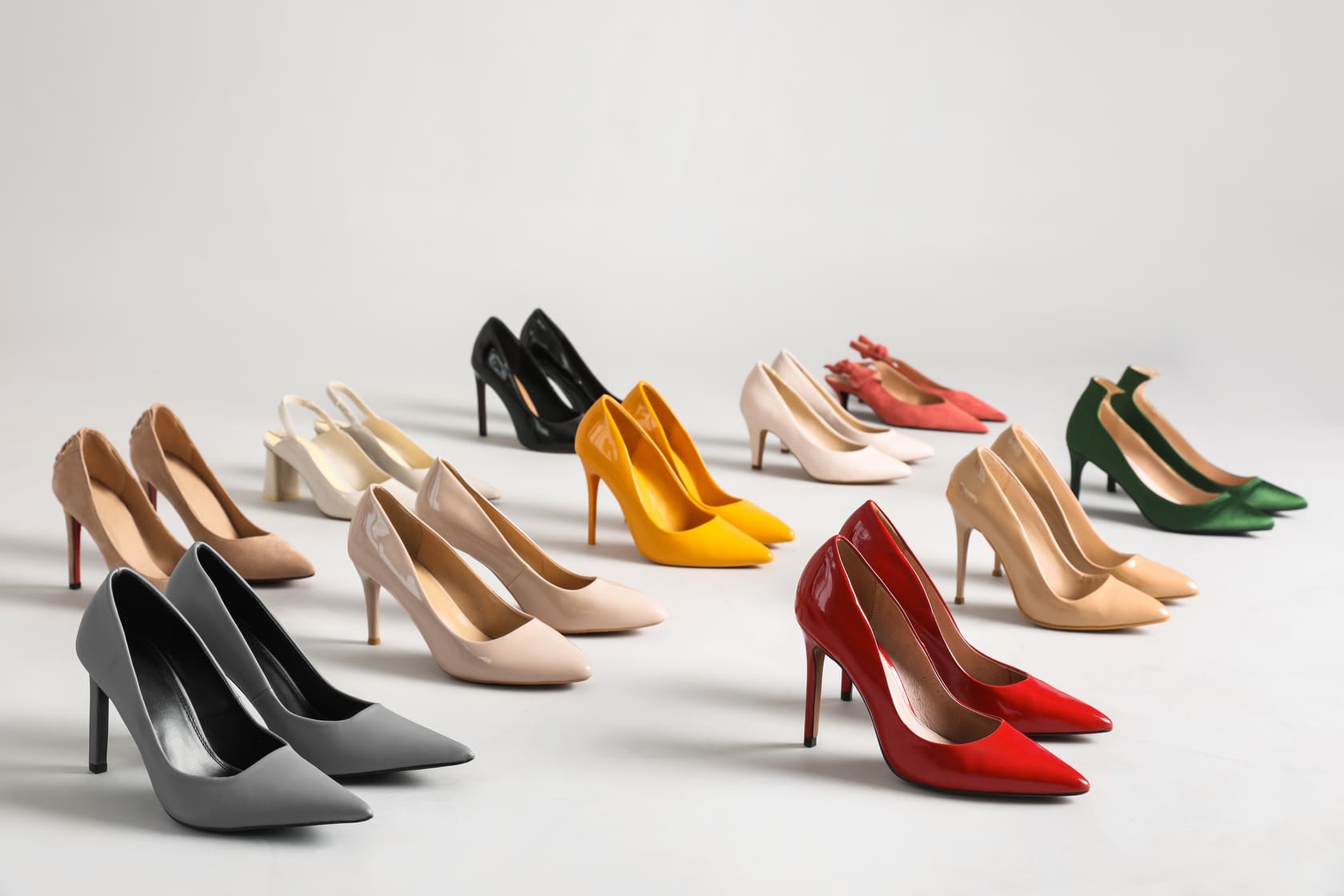October 2024
10 Types of Fashion E-Commerce Tools to Boost Performance
Ester Bazzanella

We use tools every day in all aspects of our lives. Whether it’s to cook a meal or complete a task more efficiently, tools make things easier and more efficient.
Why should your fashion e-commerce store be any different?
To stay competitive, you need the right tools to help you sell more clothing and better manage your store.
In this article, we cover 10 different types of fashion e-commerce tools you should consider implementing.
What are fashion e-commerce tools?
Fashion e-commerce tools are software that helps you manage and optimize your online fashion store.
Think of them as your digital toolkit – digital solutions designed to help with various aspects of your business, from managing inventory and providing size recommendations to personalizing shopping experiences and even handling payment and shipping.
Whether it’s an email marketing platform or a size and fit recommendation tool, these solutions automate tasks, improve customer experience, and streamline your operations.
The result?
A better experience for your shoppers and optimized operations for you and your team.
What are the benefits of implementing fashion e-commerce tools?
Different tools will provide different benefits. For example, size recommendation tools can help reduce returns and exchanges and increase conversions. Meanwhile, email marketing tools can drive repeat purchases.
Regardless of what each type of tool does, they all help to streamline your day-to-day operations and improve your store’s performance.
In short, fashion e-commerce tools help your bottom line.
10 Types of Fashion E-Commerce Tools
1. Inventory Management Tools
Managing inventory is at the heart of every successful fashion e-commerce operation. The more SKUs you have – different colors, sizes, and styles – the more complex things get. Inventory management tools are designed to keep your supply chain lean, avoid stockouts, and streamline reordering.
How They Help: Inventory management tools automate tedious tasks like tracking stock levels, managing reorders, and even forecasting demand based on historical data. They also integrate with multiple sales channels (your website, third-party marketplaces, etc.), keeping everything synced up to prevent overselling.
Example tools:
- Shopify Inventory: Integrated directly into Shopify, this tool helps small- to medium-sized fashion stores manage their stock without much hassle. It’s easy to use and covers all the basics.
- Cin7: Offers flexibility in handling complex inventory needs, such as managing stock levels for multiple product variants (sizes, colors, styles), multi-warehouse management, and easy integration with e-commerce platforms and third-party logistics providers.
- DataFeedWatch: is a leading solution in the feed-management for ecommerce. Using a feed management tool such as DataFeedWatch helps you reduce manual effort, avoid errors, and ensure that your product data looks its best across all sales and advertising channels
2. Size Recommendation Tools
One of the most critical pain points in fashion e-commerce is size uncertainty.
How many times have you lost a sale because a customer was unsure about sizing? Or worse, how often have you faced a return because the fit wasn’t right?
Size recommendation tools eliminate that uncertainty, making it easier for shoppers to find the perfect fit while shopping online.
These tools combine user-inputted data, body measurements, and advanced algorithms to recommend the most accurate size for each shopper. This helps boost customer confidence, reduce returns, and improve conversion rates.
The world’s leading size recommendation tool:
- Size & Fit: Made by people who understand fashion and are used in over XX countries, Size & Fit takes into account anthropometric data to provide highly personalized size recommendations. Its size recommendations show users’ how they can expect different sizes to fit, allowing them to make decisions based on their personal preferences.
3. Email Marketing Tools
Did you know that email marketing still has one of the highest ROI in e-commerce?
But you can’t just send out email blasts to your entire email list anymore. You need to send out personalized emails to segmented audiences, providing them with relevant content. Fortunately, email marketing tools have evolved into smart, data-driven platforms that let you reach your customers with personalized, timely, and relevant content.
Why You Need Them: From abandoned cart reminders to new collection launches, email marketing tools help you drive sales and nurture relationships with your customers. They ensure that customers don’t just shop once, but that they come back again and again.
Example tools:
- Klaviyo: Built for e-commerce, it integrates seamlessly with Shopify and other platforms. Klaviyo’s strength is personalization – sending the right message at the right time based on customer behavior.
- Mailchimp: Perfect for beginners, it offers easy-to-use templates, audience segmentation, and basic automation features. A solid starting point if you’re new to email marketing.
4. Customer Reviews & Social Proof Tools
People trust people, not just products. That’s why reviews, testimonials, and user-generated content are so powerful for fashion brands. Social proof tools let your customers do the talking, showcasing real-world photos and reviews that help build trust with new shoppers.
How They Work: These tools allow your customers to leave reviews and even upload photos of themselves wearing your products. Some also pull in social media content featuring your brand and display it directly on your product pages. The more relatable the content, the higher the chances of a conversion.
Example tools:
- Yotpo: With its robust platform, Yotpo collects reviews, photos, and integrates with social media for a seamless shopping experience. It’s perfect for creating a community around your brand.
- Loox: Specializing in photo reviews, Loox is a Shopify app that lets customers show off your products, which adds authenticity to your store’s appearance.
5. Personalization Tools
Today’s customers want a shopping experience tailored to them, and personalization tools deliver just that. From personalized product recommendations to custom discount offers, these tools analyze shopper behavior and suggest the most relevant products to keep them engaged.
Why They’re Crucial: Personalization tools turn data into action. They look at everything from what a shopper has clicked on to what they’ve purchased in the past to predict what they’ll want next. Whether it’s showing them the latest styles they’ve been eyeing or suggesting complementary items, these tools work to increase your average order value and repeat purchases.
Example tools:
- Nosto: This tool’s strength lies in hyper-targeted recommendations based on behavior, trends, and even weather. Imagine suggesting raincoats on a rainy day!
- LimeSpot: Not only does LimeSpot help with product recommendations, but it also offers deep insights into customer behavior, helping you make more informed marketing decisions.
6. Payment Solutions
No one likes a clunky checkout. Payment solutions make sure your customers can complete their purchase quickly and securely, reducing cart abandonment. Offering flexible options like “buy now, pay later” also entices customers who may be on the fence, especially for higher-priced fashion items.
Why It Matters: Optimizing your checkout requires smooth, secure payment options. In fashion e-commerce, where trends and impulse buys reign supreme, the last thing you want is a complicated checkout process slowing customers down. Payment tools provide quick, flexible solutions that make it easy to complete a purchase and ensure your customers feel secure doing it.
Example tools:
- Shopify Payments: Seamlessly integrated with your Shopify store, this tool offers a hassle-free payment experience for both you and your customers.
- Klarna: This “buy now, pay later” solution allows customers to split payments, making pricier items more accessible.
7. Shipping & Fulfillment Tools
So, your customer has added their items to the cart and checked out – what’s next? Getting those items into their hands fast. Shipping and fulfillment tools make this part of the process a breeze, helping you automate tasks like generating shipping labels, tracking packages, and handling returns.
How They Work: From calculating real-time shipping rates to printing labels and sending tracking info, shipping tools ensure everything goes smoothly from warehouse to doorstep. Some even offer branded tracking pages, giving your store a more professional feel.
Example tools:
- ShipStation: This tool integrates with multiple carriers and automates the fulfillment process, making shipping seamless no matter where your customers are.
- EasyShip: With global shipping options, this tool makes it easy to offer international shipping without any guesswork when it comes to pricing or customs.
8. Visual Search Tools
In fashion, it’s all about inspiration and looks. Visual search tools allow customers to find exactly what they’re looking for by simply uploading an image or snapping a picture of an item they love. It’s like a personal shopping assistant who can scan the internet to find exactly what they need.
Why You Should Care: Visual search is the next big thing in fashion e-commerce, especially for customers who want to find similar items to those they’ve seen on social media or in-store. These tools also help you capture impulse buyers who fall in love with an item but don’t know where to find it.
Example tool:
- Syte: Known for its powerful visual recognition technology, Slyce helps users upload a photo and find similar items from your store. It’s intuitive and fun to use, making the shopping experience more engaging.
9. Strumenti di prova virtuale
Le persone non indossano singoli indumenti, ma outfit. A tal fine, ha senso che tu debba cercare di incoraggiare gli acquirenti ad acquistare outfit completi. Gli strumenti di prova virtuale ti aiutano a fare proprio questo. Consentendo ai tuoi acquirenti di combinare diversi capi dal tuo inventario per creare look completi, aiutano ad aumentare il valore medio dell’ordine.
Come coinvolgono gli acquirenti: fornendo un’esperienza interattiva, gli utenti diventano più coinvolti e trascorrono più tempo a navigare nel tuo negozio. Questo li espone a più prodotti nel tuo catalogo e aumenta la probabilità che facciano acquisti più grandi.
- Fashion Looks: facile da usare per gli acquirenti, Fashion Looks può essere integrato con Size & Fit per garantire che gli acquirenti ordinino la taglia giusta quando effettuano l’acquisto di outfit. Consente inoltre agli utenti di condividere i propri abiti con amici e familiari. Essere in grado di condividere gli outfit aiuta a promuovere il social selling e aiuta a indirizzare il traffico verso il tuo negozio e a ridurre i costi di acquisizione.
10. Analytics Tools
Having an analytics tool is essential to understand your store’s performance and make data-driven decisions. Tools like Google Analytics and Optimizely can help you do just that. They can help you track user behavior, measure engagement, and optimize your marketing strategies. Analytics tools help give you an overarching view of your fashion e-commerce store.
Example tools:
-
Google Analytics: Provides insights into website traffic and user demographics. You can use it to identify trends and find areas for improvement.
- Optimizely: Focuses on A/B testing and experimentation. Use it to test different variations of your content see what resonates best with your audience.
FAQ
Are these tools difficult to implement?
Most e-commerce tools are designed to be user-friendly, with simple integrations for popular platforms like Shopify and WooCommerce. Some tools may require more setup depending on your store’s complexity, but most offer step-by-step guides, tutorials, or customer support to help you get started without a headache.
How do size recommendation tools work?
Some size recommendation tools use statistical models to make size recommendations. These tools make recommendations based on user data and past return rates. Other tools, like Size & Fit, use anthropometric models that rely on user data and artificial intelligence to determine body measurements and make personalized recommendations.
Can I use multiple e-commerce tools together?
Absolutely! Many e-commerce tools are designed to integrate with e-commerce platforms and other tools. For example, your inventory management tool can work alongside your email marketing and shipping tools, ensuring that your entire operation runs smoothly from start to finish. Just be sure to choose tools that work well together on your chosen platform.
What if I have a small fashion e-commerce store? Are these tools still worth it?
Yes! Even small stores can benefit from e-commerce tools. In fact, automating tasks like inventory tracking or email marketing can save you precious time and help you scale faster. Plus, tools like size recommendations or personalized shopping experiences make your store feel more professional, no matter its size.
How much do these tools cost?
Pricing for e-commerce tools varies. Some, like email marketing platforms, offer free tiers for smaller stores, while others might charge based on usage or sales volume. It’s essential to consider the ROI since these tools typically pay for themselves by boosting sales, reducing returns, and saving you time.
Which of these tools can help reduce returns in my store?
Size recommendation tools. By suggesting the most accurate size based on customer data, these tools can significantly reduce the number of returns due to sizing issues.
How do I know which e-commerce tools are right for my store?
The right tools depend on your store’s size, needs, and goals. If you’re dealing with a lot of returns, a size recommendation tool like Size & Fit is a must. If you want to increase sales, personalized shopping experiences, and email marketing tools are great options. Start by identifying your store’s biggest challenges and then explore tools that address those specific needs.
Reduce Friction
In short, the types of tools on our list are all about reducing friction. Some reduce friction for shoppers during checkout or while looking for new items, while others work behind the scenes to help you and your team.
All the tools on our list will help boost the performance of your online fashion store in one way or another. Before implementing any of them, remember to do your research and identify your store’s unique needs.
If you’re looking for other ways to improve your store’s performance, consider downloading our e-book about size charts.








